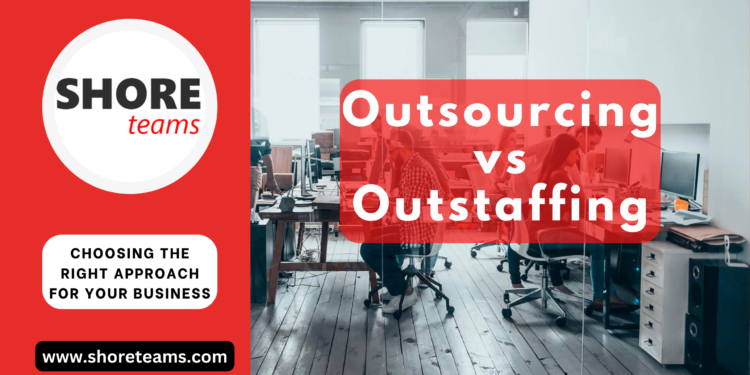Outsourcing and outstaffing have become popular strategies for businesses looking to optimize their operations and achieve cost efficiency. However, understanding the differences between the two and determining which approach suits your business needs can be a daunting task. In this article, we will explore the nuances of outsourcing and outstaffing, comparing their advantages, disadvantages, and considerations. By the end, you will be equipped with the knowledge to make an informed decision that aligns with your business goals.
What is Outsourcing?
Outsourcing involves delegating specific tasks, processes, or even entire projects to external service providers. These providers are typically specialized firms or individuals who offer their expertise to fulfil the requirements of the outsourcing company. The tasks outsourced can range from customer support and IT services to manufacturing and marketing.
The Benefits and Challenges of Outsourcing
Outsourcing offers several advantages, such as access to specialized expertise, cost savings, increased efficiency, and scalability. By outsourcing certain functions, businesses can focus on their core competencies while leveraging the specialized skills of external professionals. However, challenges such as communication barriers, quality control, and potential security risks need to be carefully managed.
Understanding Outstaffing
Outstaffing, also known as staff augmentation or dedicated team hiring, involves hiring remote professionals who become an extension of your in-house team. These professionals work exclusively for your company, often remotely, and are managed directly by your organization. Outstaffing provides flexibility and control over your workforce while reducing the administrative burden associated with traditional employment.
The Advantages and Considerations of Outstaffing
Outstaffing offers several benefits, including access to a global talent pool, cost-effectiveness, greater control over resources, and increased productivity. It allows businesses to quickly scale their teams, adapt to changing project requirements, and minimize hiring and training costs. However, clear communication, efficient collaboration, and cultural compatibility should be taken into account when managing a remote team.
Choosing the Right Approach for Your Business
To determine whether outsourcing or outstaffing is the right approach for your business, several factors must be considered. These factors include the nature of the tasks or projects, budgetary constraints, desired control and involvement, the need for specialized expertise, and the long-term goals of your business. It is crucial to weigh the pros and cons of each approach and align them with your unique requirements.
Best Practices for Successful Outsourcing or Outstaffing
Regardless of the approach you choose, there are certain best practices that can help ensure a successful partnership. These practices include conducting thorough research, defining clear expectations and deliverables, establishing effective communication channels, building trust with your service provider or outstaffing team, and continuously monitoring and evaluating the progress and results.
Conclusion: Making the Right Decision for Your Business
Choosing between outsourcing and outstaffing is a critical decision that can significantly impact your business’s success. By understanding the differences, benefits, and considerations of each approach, you can make an informed choice that aligns with your goals and objectives. Remember to evaluate your specific needs, consider the long-term implications and implement best practices to maximize the potential benefits of outsourcing or outstaffing.







































